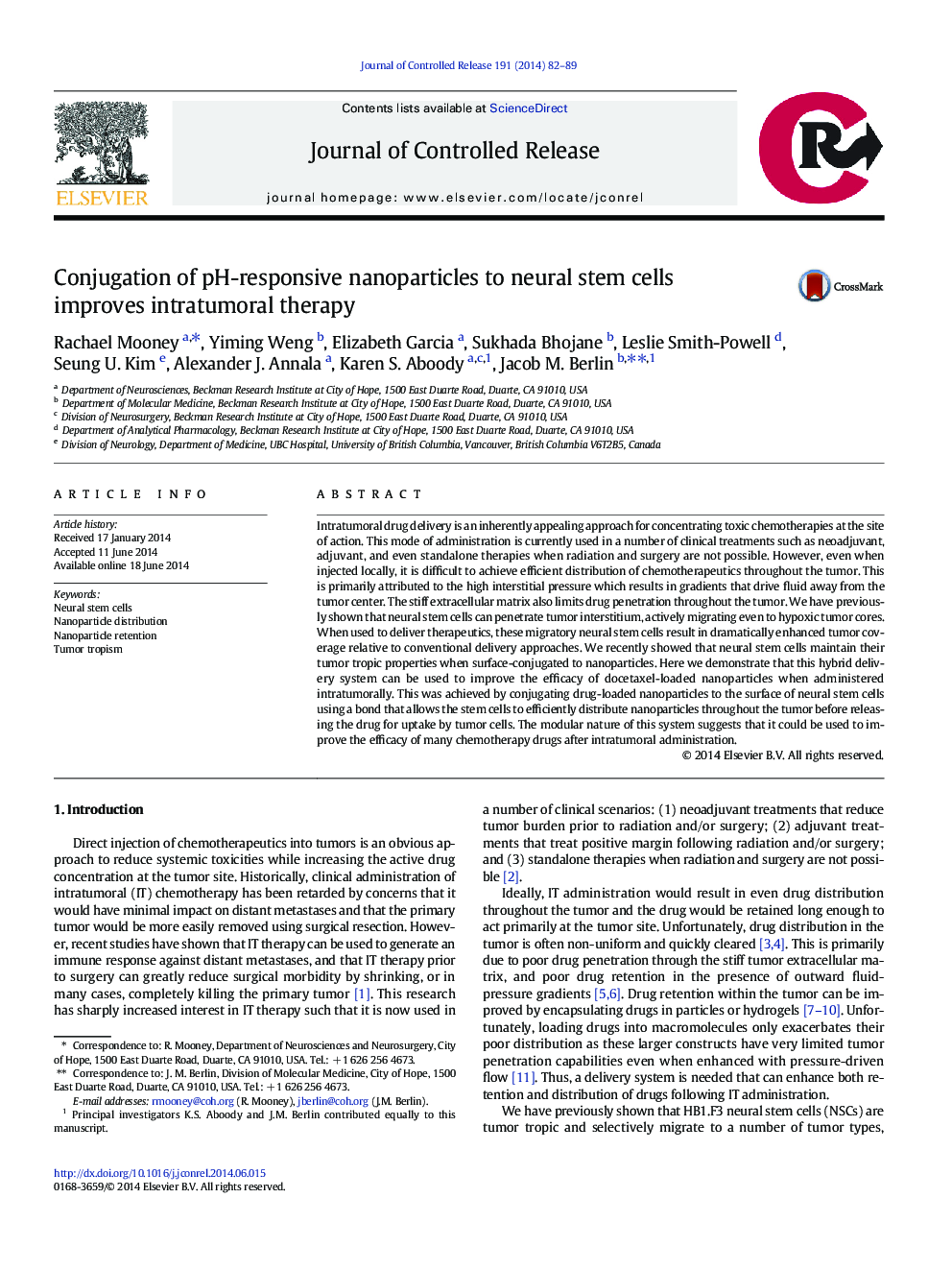| Article ID | Journal | Published Year | Pages | File Type |
|---|---|---|---|---|
| 1423866 | Journal of Controlled Release | 2014 | 8 Pages |
Intratumoral drug delivery is an inherently appealing approach for concentrating toxic chemotherapies at the site of action. This mode of administration is currently used in a number of clinical treatments such as neoadjuvant, adjuvant, and even standalone therapies when radiation and surgery are not possible. However, even when injected locally, it is difficult to achieve efficient distribution of chemotherapeutics throughout the tumor. This is primarily attributed to the high interstitial pressure which results in gradients that drive fluid away from the tumor center. The stiff extracellular matrix also limits drug penetration throughout the tumor. We have previously shown that neural stem cells can penetrate tumor interstitium, actively migrating even to hypoxic tumor cores. When used to deliver therapeutics, these migratory neural stem cells result in dramatically enhanced tumor coverage relative to conventional delivery approaches. We recently showed that neural stem cells maintain their tumor tropic properties when surface-conjugated to nanoparticles. Here we demonstrate that this hybrid delivery system can be used to improve the efficacy of docetaxel-loaded nanoparticles when administered intratumorally. This was achieved by conjugating drug-loaded nanoparticles to the surface of neural stem cells using a bond that allows the stem cells to efficiently distribute nanoparticles throughout the tumor before releasing the drug for uptake by tumor cells. The modular nature of this system suggests that it could be used to improve the efficacy of many chemotherapy drugs after intratumoral administration.
Graphical abstractFigure optionsDownload full-size imageDownload high-quality image (89 K)Download as PowerPoint slide
